My first shop was in the second bedroom of our small 2 bedroom apartment. It was a poor shop at best! I am sure the downstairs neighbor thought so as well.
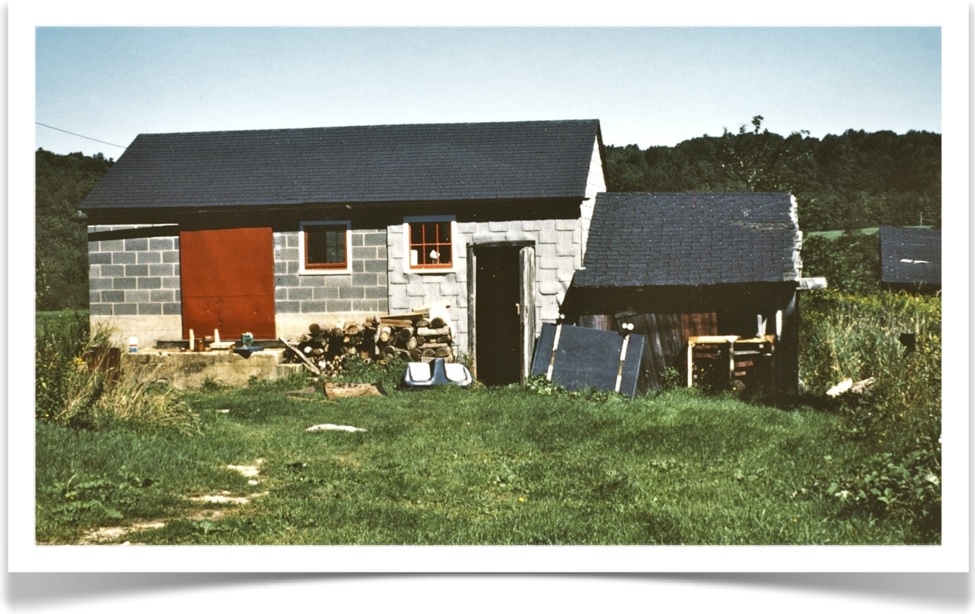
Our search for a rental with some kind of shop/studio possibilities was not going well. It was pure chance that a good solution came our way.
My mother was working at an art museum located on the local university campus. One day, while the museum was closed, an older woman showed up at her desk. No one was quite sure how she got in but it was lucky she did. She was looking for someone to rent half of an old farm house. There was a "milk house" out back that she thought might make a good art studio so she had come to the art museum looking for an artist to fix up the studio and live in the apartment. Lucky us!
It was a small 12’ x 12’ building that had a decent roof. It was my first “real” shop. We used salvaged wood to build a work bench and shelves. I bought a drill press and router. We borrowed Marji’s grandfather’s bandsaw. I had my father’s old table saw and converted it to a disk sander.
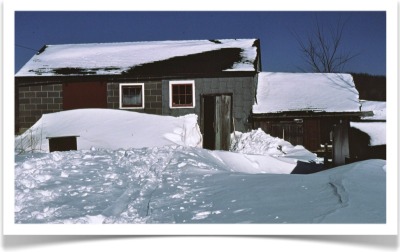 The shop was as crowded as it sounds. To make things just a bit more exciting I heated it in the winter with a homemade wood stove! I had to time projects between when I had heat and when I made dust! It was cold in the winter and hot in the summer but I considered it a fine place to work. But not for long. When I started building sculptures to fill the orders we had taken at Rhinebeck it quickly became evident that I needed a bigger place to work.
The shop was as crowded as it sounds. To make things just a bit more exciting I heated it in the winter with a homemade wood stove! I had to time projects between when I had heat and when I made dust! It was cold in the winter and hot in the summer but I considered it a fine place to work. But not for long. When I started building sculptures to fill the orders we had taken at Rhinebeck it quickly became evident that I needed a bigger place to work.
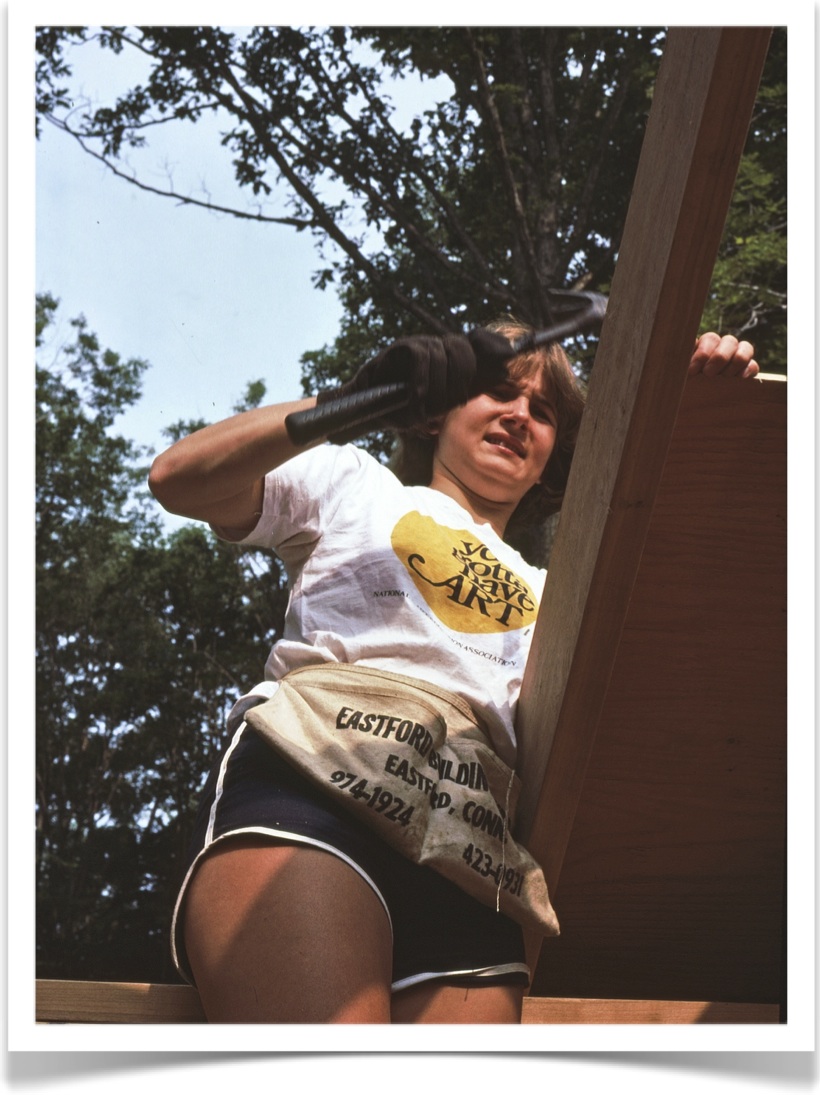 Marji liked houses and building. We spent the first years of our marriage looking at land hoping to build some day. Most of what we could afford was either swamp or cornfield. We had pretty much given up when Marji’s father heard about a piece of raw land in Ashford, Connecticut. It was heavily wooded and filled with underbrush but had a south facing hillside. It was expensive for what we could afford and of course we had no credit yet. (You had to be 25 to get a credit card!) Luckily the seller was willing to take payment in 3 installments.
Marji liked houses and building. We spent the first years of our marriage looking at land hoping to build some day. Most of what we could afford was either swamp or cornfield. We had pretty much given up when Marji’s father heard about a piece of raw land in Ashford, Connecticut. It was heavily wooded and filled with underbrush but had a south facing hillside. It was expensive for what we could afford and of course we had no credit yet. (You had to be 25 to get a credit card!) Luckily the seller was willing to take payment in 3 installments.
At the time of the 1977 June "Rhinebeck" , (Northeast Craft Fair) we had one more payment due January 1 of 1978. With the successful show we made the payment on time and started planning the new shop/house.
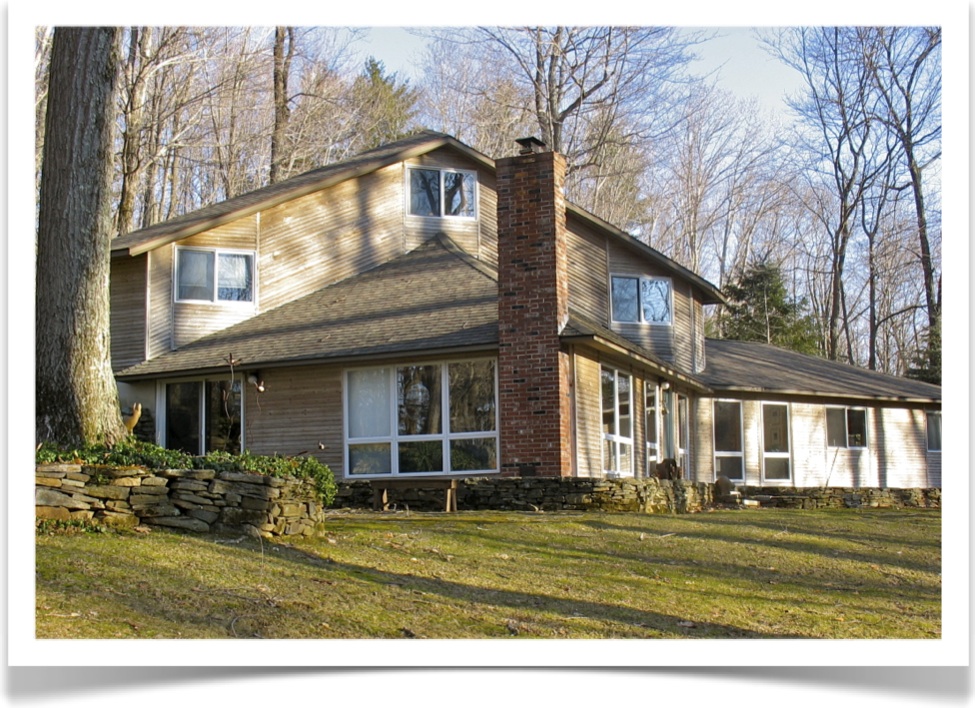 Marji worked on plans for the structure. Her father helped with engineering and was our carpentry teacher.
Marji worked on plans for the structure. Her father helped with engineering and was our carpentry teacher.
We cleared a building lot and access driveway in early 1978. When the land was dry enough we hired someone to dig the foundation hole and grade the driveway. The foundation was set by early June and we started framing. The next 6 months were intense, working on the house from 7 AM till 3 PM and then in the shop until 9 or 10 PM at night. We were extremely fortunate to have a gallery in Honolulu that was selling everything I could send them and basically gave us a blanket order. We didn’t have to do any shows and just kept our heads down working. It’s nice to be young!
My new workshop was in the wing and consisted of greatly expanded space including a display area and design office. I worked there for 14 years.
In 1992 Marji and I decided it was time for me to move out of the house. We needed the space for a growing family. We owned a piece of adjacent land and Marji designed another "house" to fit on it. This one would have a larger shop, separate finishing room and a gallery. I cleared the land but we hired a local builder to put the structure up. Building one house in a lifetime is enough!
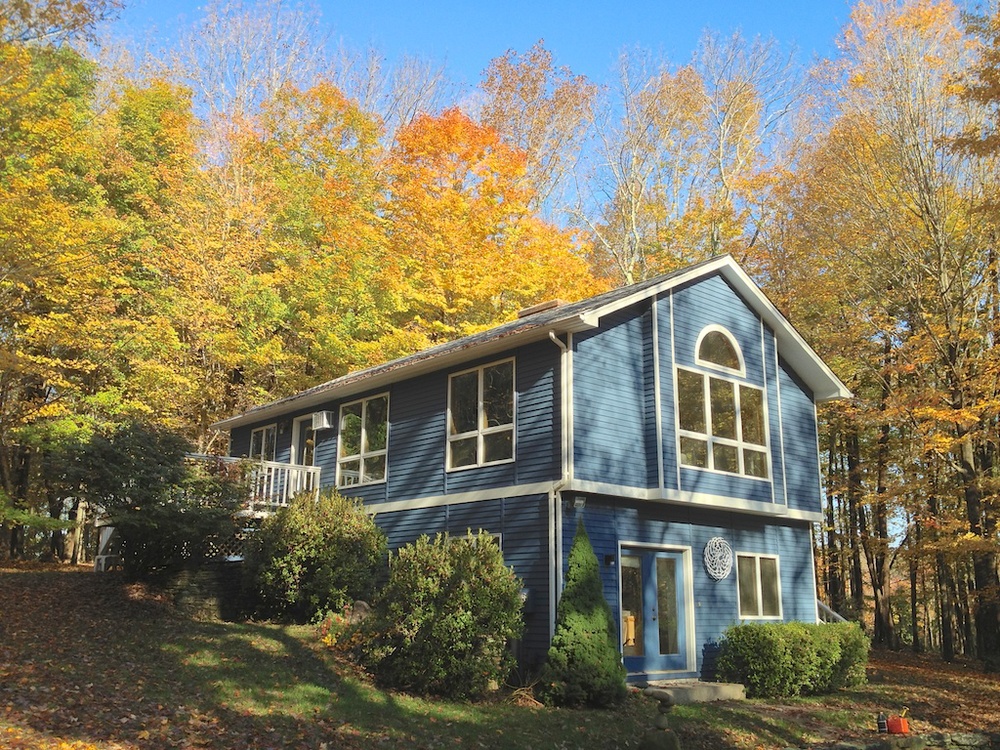
It is to this shop that I still "commute" everyday. The commute is a 2 minute walk along a woodland path regularly shared with the local deer population.
Continue onto It's not the Mechanism - It's the Motion!
